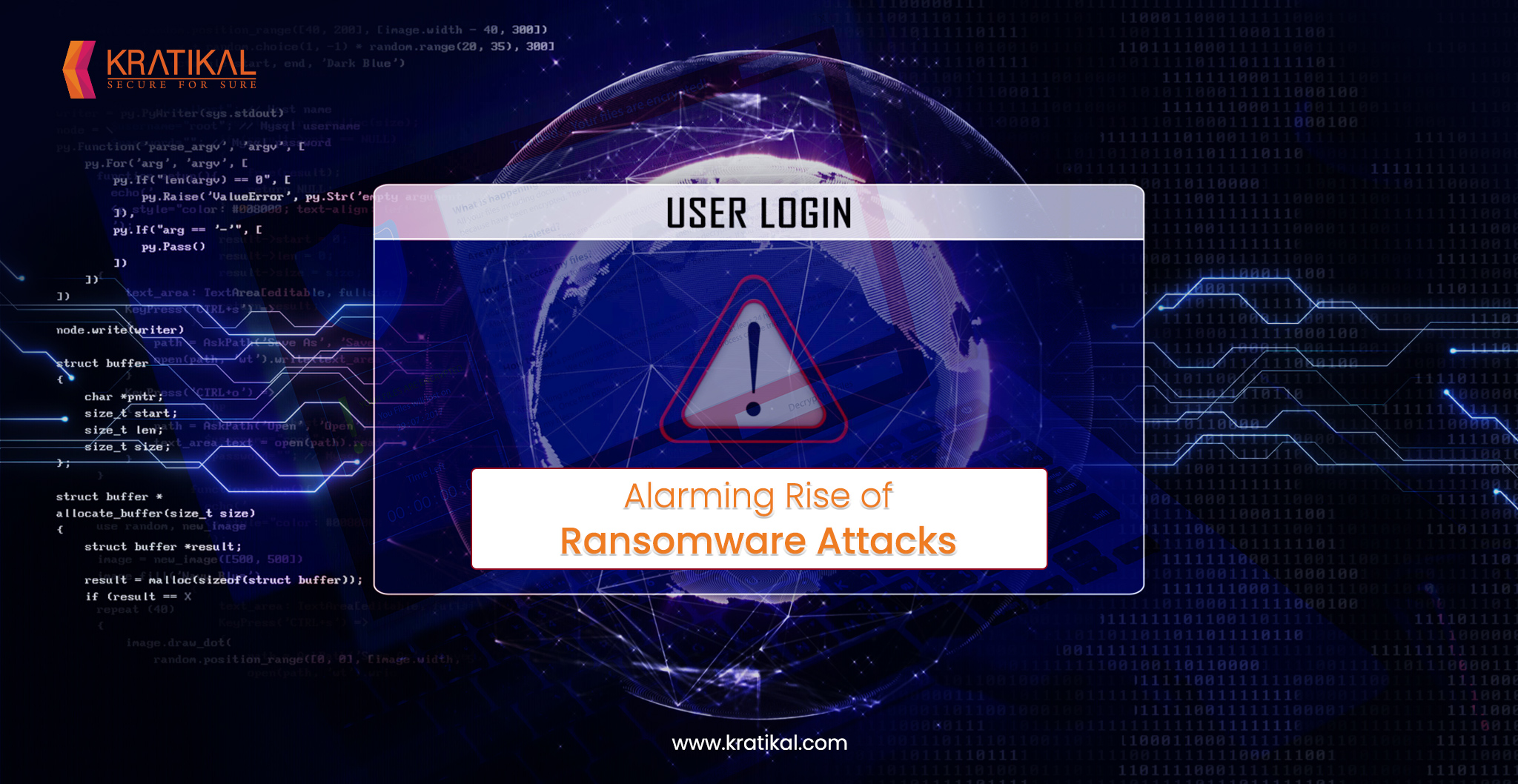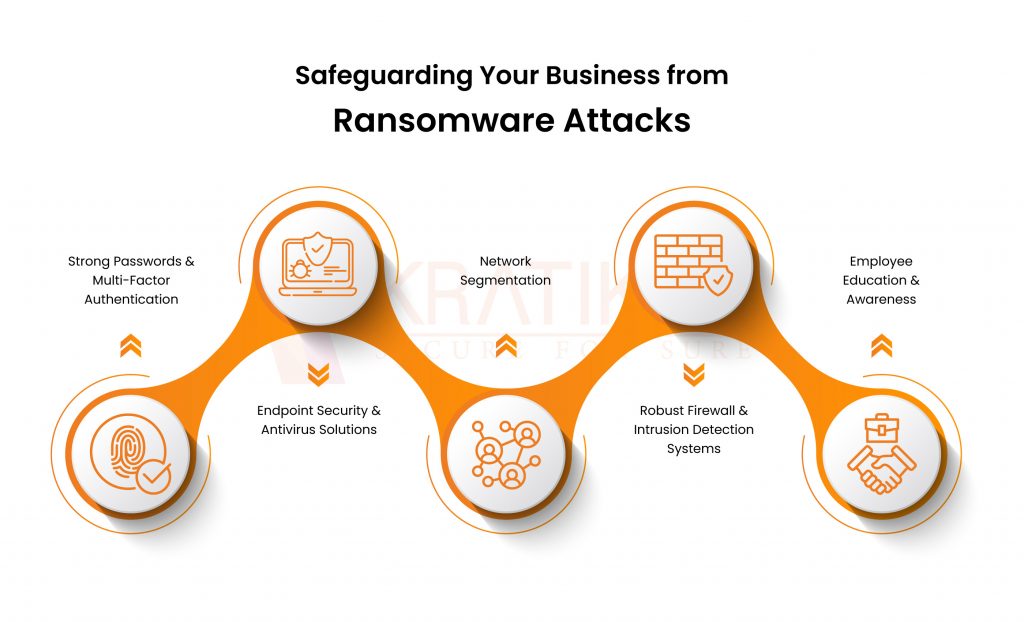
Ransomware attacks have dramatically increased over the past few years, with severe effects on both individuals and corporations. Cybercriminals now use ransomware, a type of malicious software that encrypts files or blocks access to systems until a ransom is paid. A typical ransomware attack begins with a little gap in the outside barriers. Enough for a potential attacker to gain some insight control. A user’s workstation is the most likely target. The attacker sends the victim some code via email and convinces them to run it.
This blog investigates the worrisome increase in ransomware attacks, the factors driving it, and the critical requirement for preventative steps to deal with this digital threat.
Table of Content
Define Ransomware Attacks
Ransomware attacks are a sort of malicious cyber attack in which an attacker encrypts or blocks access to files, systems, or data on a victim’s computer or network. In order to gain access to the encrypted information or systems, the attacker then demands a ransom from the victim. Attacks utilizing ransomware can have very negative effects, including major disruption, monetary loss, and data breaches.
Attacks with ransomware can have terrible consequences for both people and businesses. They may lead to the loss of vital data, monetary loss from downtime and recovery expenses, harm to the company’s brand, and possibly legal and regulatory repercussions if a sensitive customer or personal information is compromised.
Factors Driving Rise in Ransomware Attacks
Several reasons have contributed to the rise in ransomware attacks. Knowing these causes can assist us in identifying weak points and creating powerful countermeasures to this escalating threat. Here are a few main causes of the growth in ransomware attacks:
- Accessibility – The dark web’s availability of ransomware toolkits and services has made it easier for hackers to get started. Platforms for ransomware as a service (RaaS) are accessible to even people with a limited level of technological understanding, allowing anyone to launch attacks without a high level of technical ability. . This accessibility has expanded the pool of potential attackers, contributing to the increase in incidents.
- Insufficient Cybersecurity Awareness – Ransomware attacks have been successful because people and organizations lack enough cybersecurity understanding. Many people, even employees, are not aware of the dangers of opening phishing emails, clicking on dubious links, or going to compromised websites. Organizations may also neglect to perform routine software updates, lack adequate cybersecurity protections, or apply weak security standards. Because of this ignorance and unpreparedness, systems can be compromised and ransomware attacks can be carried out.
- Adversary Techniques – Attacks using ransomware have advanced over time. To avoid discovery and increase their impact, cybercriminals are continually modifying and improving their methods. To trick users into opening infected email attachments or clicking on dangerous links, they use sophisticated encryption algorithms, software exploits, and social engineering techniques. It becomes more difficult for security systems to identify and stop assaults as a result of these constantly changing techniques.
- Financial Gain – Cybercriminals have found that ransomware assaults are quite profitable. More hackers are now involved in such crimes due to the ability to demand large quantities of money from victims, frequently through anonymous cryptocurrency payments. The possibility of financial gain is a key factor behind the increase in ransomware attacks.
In order to address these factors, a multifaceted strategy that includes technology improvements, cybersecurity awareness and education, policy and legislation, and cooperative efforts between governments, law enforcement agencies, and cybersecurity specialists is needed. We may attempt to reduce the risk and impact of ransomware attacks by addressing these underlying causes.
Safeguarding Your Business from Ransomware Attacks
Ransomware attacks pose a significant threat to businesses of all sizes, potentially resulting in financial losses, operational disruptions, and reputational damage. However, there are several proactive measures you can take to safeguard your business from ransomware attacks. Here are some essential steps to consider:
- Strong Passwords and Multi-Factor Authentication – Ensure that your company has strict password regulations in place, requiring a mix of capital and lowercase letters, digits, and special characters. All user accounts should employ multi-factor authentication (MFA) to add an additional layer of protection.
- Endpoint Security and Antivirus Solutions – Antivirus software and dependable endpoint security solutions should be installed on all devices in your company. These tools assist in identifying and preventing ransomware infections. Update your antivirus program and run regular scans to check for new dangers.
- Network Segmentation – Create network segments to keep important systems and information separate from less secure regions. In the event of an infection, this aids in stopping the spread of ransomware and reduces the potential damage to your entire network.
- Robust Firewall and Intrusion Detection Systems – Install and maintain a reliable firewall to keep an eye on incoming and outgoing network traffic. Put intrusion detection and prevention systems (IDS/IPS) to use to find and stop harmful activity. Through the use of these precautions, you can spot ransomware assaults before they infect your network and stop them there.
- Employee Education and Awareness – Invest in thorough cybersecurity training for your employees. Inform them of the dangers of ransomware attacks, such as phishing emails, suspicious attachments, and harmful URLs. Encourage them to use caution when interacting with unknown or suspicious online content.

By implementing these proactive measures, regularly assessing and updating your security practices, and staying vigilant, you can significantly reduce the risk of falling victim to a ransomware attack. Remember, cybersecurity is an ongoing effort, and continuous improvement and awareness are crucial to safeguarding your business from evolving threats.
Ultimately, protecting against ransomware requires a proactive mindset, continuous assessment of security practices, and a commitment to ongoing improvement. By staying informed, investing in cybersecurity measures, and fostering a culture of security awareness, businesses can safeguard their valuable assets from the rising threat of ransomware attacks.
Kratikal, a cert-in empanelled organization helps in safeguarding from ransomware attacks, It helps shield against ransomware attacks. It enables businesses to defend themselves against different cyberattacks. In addition to compliance and risk management, network and cloud security, and web and mobile application security are just a few of the services provided by Kratikal.
“Stay One Step Ahead: Safeguard Your Business Against Ransomware Attacks”


